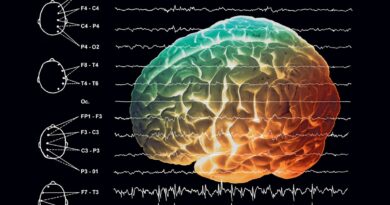Benefits and the 6 Required Components of A Balanced diet.
A balanced diet is a diet that provides all the essential nutrients your body needs to function correctly. It includes a variety of foods in the right proportions to maintain health, energy levels, and overall well-being. Here’s a detailed breakdown of the key components of a balanced diet:
Components of a Balanced Diet
1. Carbohydrates
Function:
It Provides and gives energy.
Sources:
Whole grains (brown rice, whole wheat, oats), fruits, vegetables, legumes, and tubers (potatoes, sweet potatoes).
2. Proteins
Function:
Essential for growth, repair, and maintenance of body tissues.
Sources:
Lean meats, fish, poultry, eggs, dairy products, legumes (beans, lentils), nuts, and seeds.
3. Fats
Function:
Provide energy, support cell growth, protect organs, and keep the body warm.
Sources:
Healthy fats from avocados, nuts, seeds, olive oil, and fatty fish (salmon, mackerel).
4. Vitamins
Function:
Support various bodily functions such as the immune system, energy production, and blood clotting.
Sources:
Fruits, vegetables, dairy, and whole grains.
5. Minerals
Function:
It is important for bone health, nerve function, and muscle function.
Sources:
Leafy green vegetables, nuts, seeds, meat, dairy products, and whole grains.
6. Water
Function:
Vital for nearly every bodily function including digestion, absorption, circulation, and temperature regulation.
Sources:
Water, beverages like herbal teas, and water-rich foods like fruits and vegetables.
Proportions and Tips for a Balanced Diet
Fruits and Vegetables:
Aim to fill half your plate with fruits and vegetables, focusing on a variety of colors and types to ensure a range of nutrients.
Proteins:
One-quarter of your plate should be protein-rich foods. Include both animal and plant-based sources.
Grains:
Make at least half your grains whole grains to ensure adequate fiber intake. This should fill about one-quarter of your plate.
Dairy:
Include dairy or fortified plant-based alternatives to meet your calcium and vitamin D needs.
Fats:
Use healthy fats in moderation and reduce the rate at which you take in saturated and trans fats.
Importance of a Balanced Diet
1. Improved Energy Levels:
A balanced diet ensures your body receives a steady supply of nutrients and energy throughout the day. Carbohydrates provide quick energy, while proteins and fats offer sustained energy. Consuming a mix of these nutrients helps avoid energy slumps and keeps you active and alert.
2. Better Mental Health:
Nutrient-rich foods such as fruits, vegetables, whole grains, and lean proteins can improve brain function and mood. Omega-3 fatty acids, found in fish and flaxseeds, are particularly beneficial for mental health. A balanced diet helps regulate neurotransmitters, which are critical for mood stabilization and cognitive function.
3. Enhanced Immune System:
A diet rich in vitamins (like A, C, and E) and minerals (like zinc and selenium) supports the immune system. These nutrients help protect against infections and aid in faster recovery when illnesses occur. Antioxidant-rich foods, such as berries and leafy greens, combat oxidative stress and support overall immune health.
4. Weight Management:
Eating a balanced diet helps control body weight by providing the right amount of calories and nutrients. Whole foods, high in fiber and protein, promote satiety and reduce overeating. Portion control and mindful eating habits also contribute to maintaining a healthy weight.
5. Reduced Risk of Chronic Diseases:
A balanced diet lowers the risk of developing chronic diseases like heart disease, diabetes, and certain cancers. Consuming a variety of nutrient-dense foods helps maintain healthy blood pressure, cholesterol levels, and blood sugar levels. Fiber-rich foods, such as whole grains and legumes, improve digestive health and prevent conditions like type 2 diabetes and colorectal cancer.
Steps to Achieve a Balanced Diet
1. Planning Meals with Diverse Food Groups
- Variety:
Ensure your meals include a mix of carbohydrates, proteins, fats, vitamins, and minerals. Aim for a colorful plate with different fruits and vegetables to get a broad range of nutrients.
- Meal Prep:
Plan your meals for the week ahead, incorporating various food groups in each meal. This helps in making balanced food choices and reduces the likelihood of opting for unhealthy options.
- Recipe Exploration:
Try new recipes that include diverse ingredients. This not only makes meals interesting but also ensures a wider nutrient intake.
2. Portion Control
- Serving Sizes:
Be mindful of serving sizes. Use smaller plates and bowls to help control portions. Pay attention to hunger and fullness cues to avoid overeating.
- Balanced Plates:
Divide your plate into sections: half for fruits and vegetables, a quarter for proteins, and a quarter for whole grains. This visual approach can help in portioning food correctly.
- Mindful Eating:
Eat slowly and savor each bite. This helps in recognizing when you are full, reducing the chances of overeating.
Common Challenges and How to Overcome Them
1. Dealing with Busy Schedules
- Meal Prep and Planning:
Set aside time once a week to plan and prepare meals. Batch cooking and preparing ingredients in advance can save time during the week. Consider preparing simple, quick recipes that can be made in under 30 minutes.
- Healthy Snacks:
Keep healthy snacks on hand, such as nuts, fruits, yogurt, or whole-grain crackers. These can be quickly grabbed when you’re short on time.
- Slow Cooker and Instant Pot:
Utilize appliances like slow cookers or Instant Pots to prepare meals with minimal effort. They can cook meals while you focus on other tasks.
2. Managing Cravings and Unhealthy Habits
- Healthy Alternatives:
Find healthier alternatives to satisfy cravings. For example, if you crave sweets, opt for fruit or a small piece of dark chocolate instead of sugary snacks.
- Mindful Eating:
Practice mindful eating by paying attention to what and why you are eating. This can help you recognize emotional eating and make more conscious food choices.
- Balanced Meals:
Ensure your meals are balanced and include protein, healthy fats, and fiber to keep you full and reduce cravings. Skipping meals can lead to intense cravings, so eat regularly.
3. Budget-Friendly Tips for Healthy Eating
- Seasonal and Local Produce:
Buy seasonal and locally-grown fruits and vegetables, which are often cheaper and fresher.
- Bulk Purchases:
Purchase staple items like grains, beans, and nuts in bulk. These items have a longer shelf life and are more cost-effective.
- Frozen and Canned Options:
Use frozen fruits and vegetables or canned beans and tomatoes. They are affordable, convenient, and still retain their nutritional value.
- Plan and Budget:
- Create a weekly meal plan and shopping list to avoid impulse buys and reduce food waste. Stick to your list and buy only what you need.
It’s important to recognize that making small, gradual changes is key to long-term success. Start by incorporating more fruits and vegetables into your meals, choosing whole grains over refined ones, and staying mindful of portion sizes. Remember, every small step towards a balanced diet contributes to your overall health and well-being.
Embrace the journey to better health by making informed and thoughtful food choices. Consistency and commitment allow you to enjoy the lasting benefits of a balanced diet and lead a healthier, more vibrant life.


